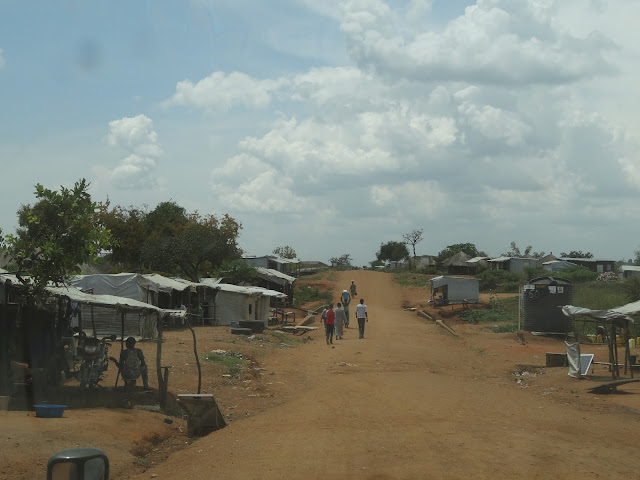World Renew not only does development work, but also works in the area of relief. In Uganda, there has been a need for relief for the many South Sudanese refugees who have fled from their homes into Uganda. In northern Uganda, World Renew has partnered with an organization called Here is Life to help care for these refugees. We recently had the opportunity to visit with Here is Life and see one of the refugee settlements near Yumbe, Uganda. The main work Here is Life has been doing with the refugees is to help build nice latrines - mainly for people with disabilities or child-headed households, as well as training some leaders to be counselors to their fellow refugees to help them heal from the trauma they have experienced.
We are so grateful to Here is Life for sharing with us what they were doing. We learned a lot and saw the many challenges they face in their work with refugees. There are no easy answers for solving refugee crises in the world, but the people who are working in these areas are certainly working hard to do what they can.
The refugee settlement we visited is called Bidibidi. The refugees living there all arrived between August and December of 2016, so they have been living there for two years now. As a result, while you may envision a field full of tents, Bidibidi in fact, looks more like a Ugandan town. There are close to a quarter of a million people living there (80% of whom are women and children) and it is very neatly divided up with roads (with road signs), schools, health centers, shops, and plots allocated to each family/household.
Below is one of the latrines being constructed through Here is Life's work:
And here is an example of someone's home plot - each family is given a 30x30 meter plot for their home and then one the outskirts of the camp another 50x50 meter plot for a small farm. This is part of a 30x30 home plot:
Here is a street of shops, similar to what you might find in a village center in other parts of Uganda:
You can see that there are trees in all of these pictures, but we were told that the area used to be pretty forested. All the trees which are remaining have an X painted on them so people know not to cut them down. The trees that used to be there were used to build houses and for firewood. Now, people have to go searching in the surrounding area for firewood to cook with. They receive a monthly ration of food: maize, beans, and cooking oil. Maize and beans don't cook very quickly, so lots of firewood is necessary. Hopefully, Here is Life will be able to try out the fireless cooker with me to see if we can make it work for the people living in the settlement.
Water is also a challenge. In the picture below, you can see a water truck delivering water to that big tank and all the people waiting to fill their jerrycans with water. There are wells throughout the camp, but we were told that during the dry season many of them eventually dry up, making water more scarce.
But despite all the challenges, children are going to school and there are health centers for people to get treatment for their sicknesses. There are two pictures below of schools.
The Ugandan communities are also benefiting from all of the NGOs working with the refugees. The Ugandan government requires that 30% of the money/resources spent on helping refugees goes to help the Ugandans living around them.
Below are some videos from our drive through Bidibidi. These can give you more of a feel for the size of this settlement and for what is happening there.










Where are most of the refugees from?
ReplyDeleteRenee, all of the refugees in Bidibidi are from South Sudan, most likely from the part of the country near the northwestern border of Uganda.
Delete